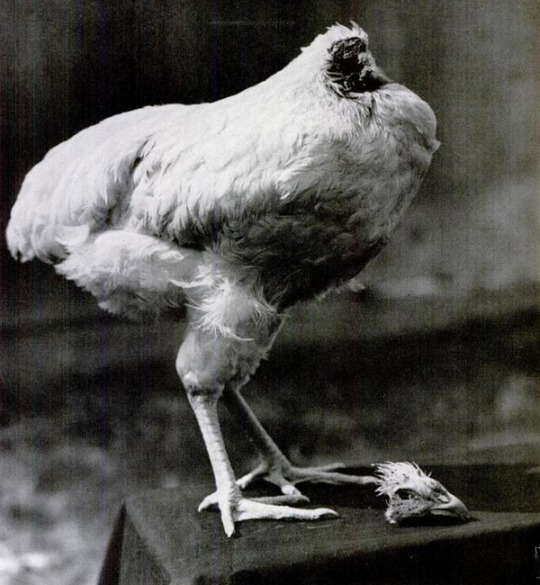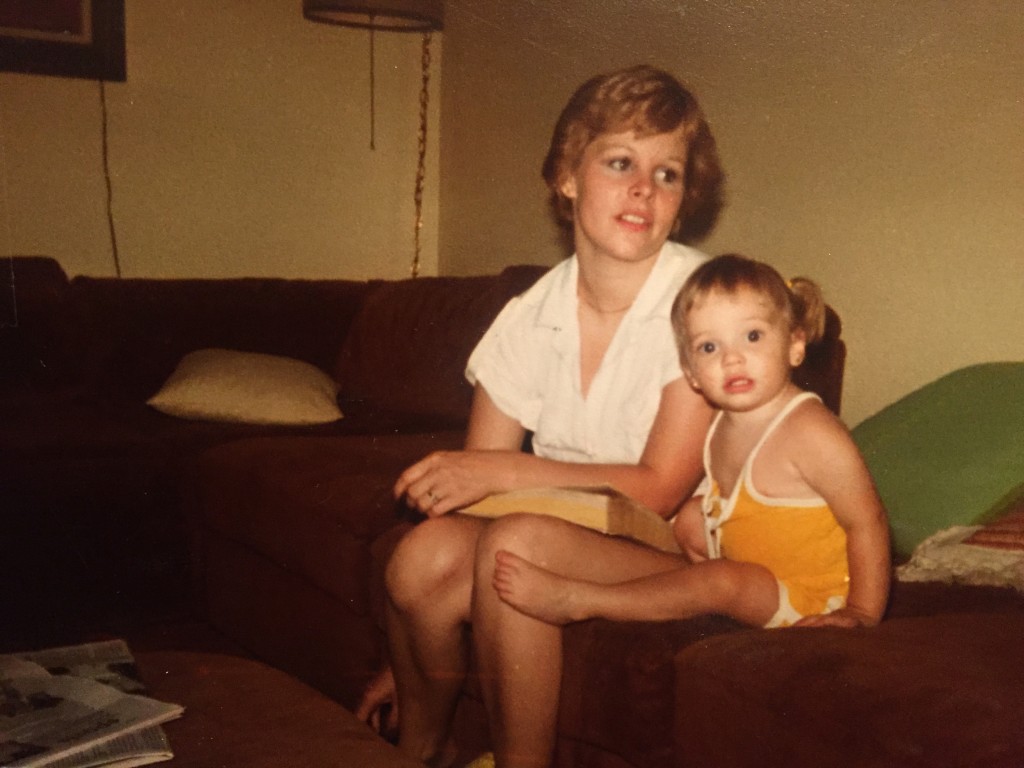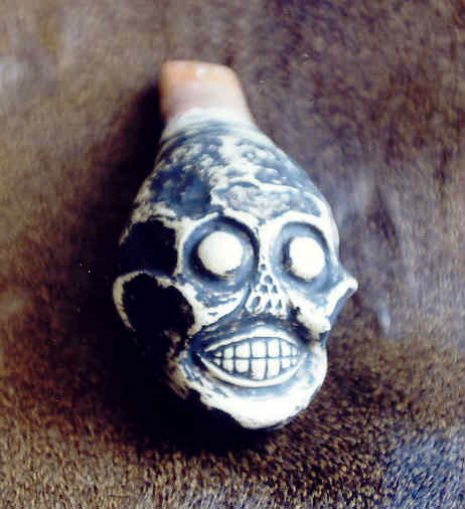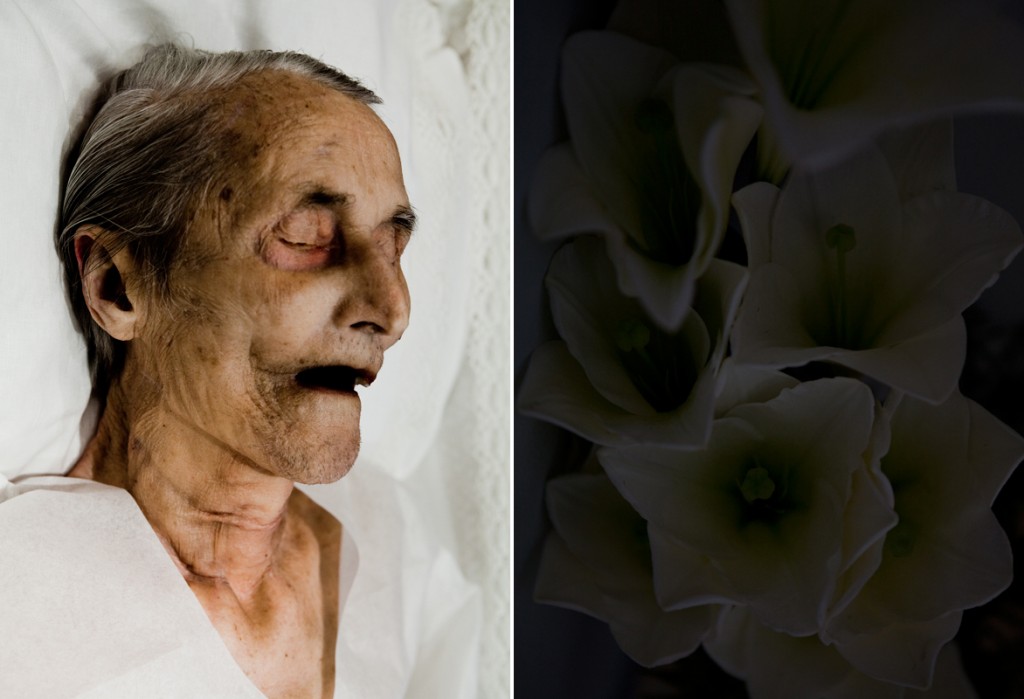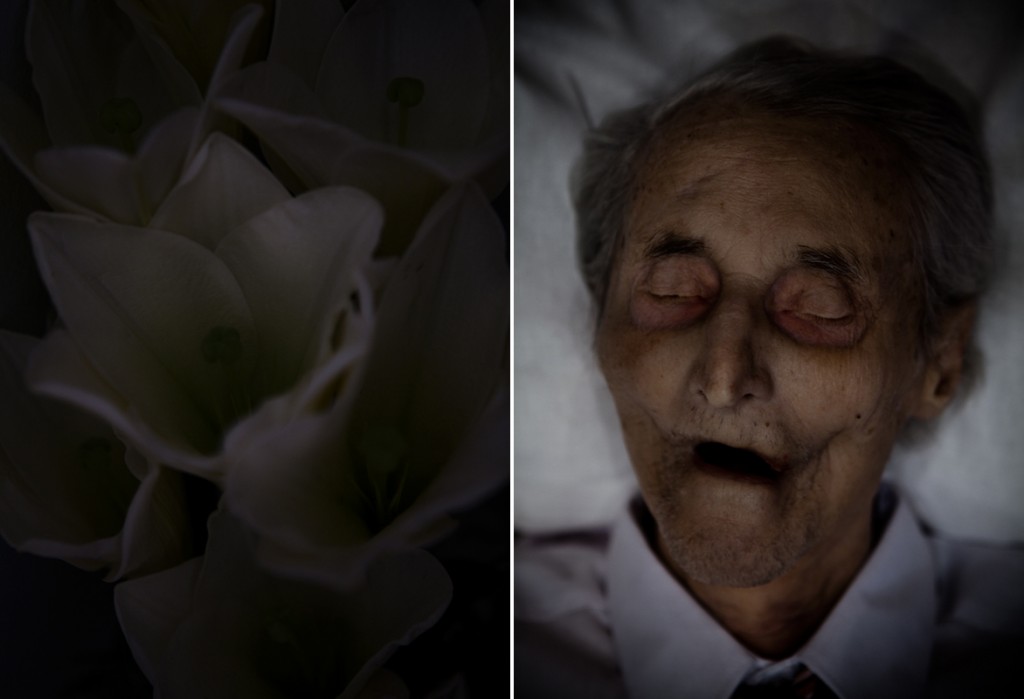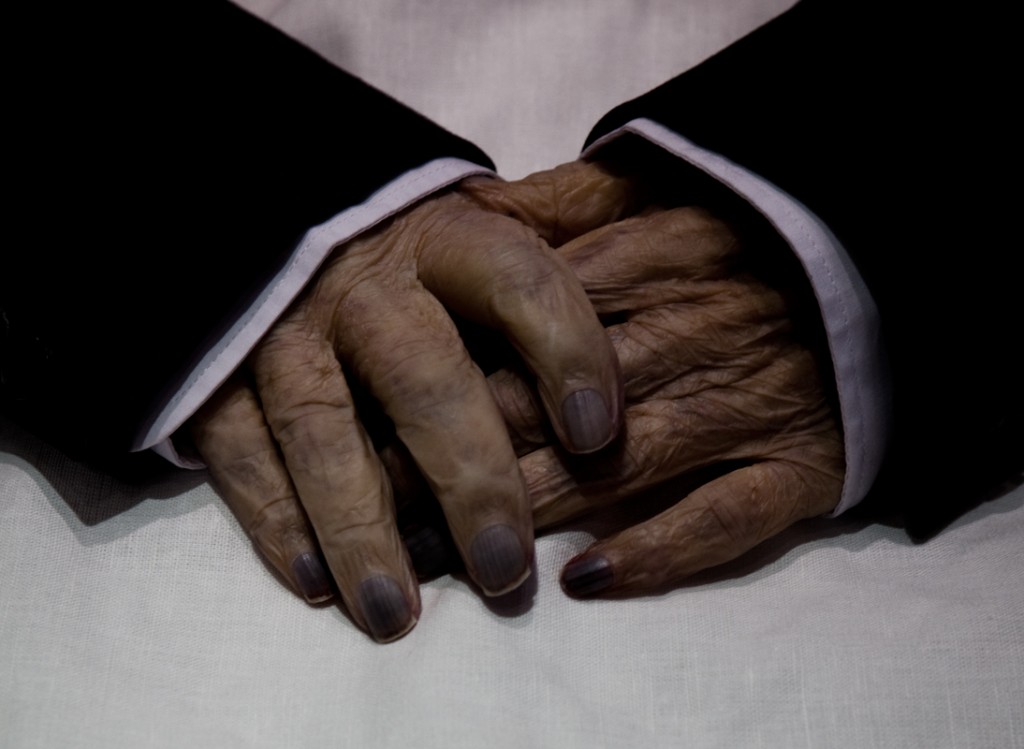Caleb Wilde
(218 comments, 980 posts)
Posts by Caleb Wilde
Mike the Headless Chicken
Via the website, Mike the Headless Chicken
September 10th, 1945 finds a strapping (but tender) young rooster pecking through the dust of Fruita, Colorado. The unsuspecting bird had never looked so delicious as he did that, now famous, day. Clara Olsen was planning on featuring the plump chicken in the evening meal. Husband Lloyd Olsen was sent out, on a very routine mission, to prepare the designated fryer for the pan. Nothing about this task turned out to be routine. Lloyd knew his mother-in-law would be dining with them and would savor the neck. He positioned his ax precisely, estimating just the right tolerances, to leave a generous neck bone. “It was as important to suck-up to your mother-in-law in the 40’s as it is today.” A skillful blow was executed and the chicken staggered around like most freshly terminated poultry.
Then the determined bird shook off the traumatic event and never looked back. Mike (it is unclear when the famous rooster took on the name) returned to his job of being a chicken. He pecked for food and preened his feathers just like the rest of his barnyard buddies.
When Olsen found Mike the next morning, sleeping with his “head” under his wing, he decided that if Mike had that much will to live, he would figure out a way to feed and water him. With an eyedropper Mike was given grain and water. It was becoming obvious that Mike was special. A week into Mike’s new life Olsen packed him up and took him 250 miles to the University of Utah in Salt Lake City . The skeptical scientists were eager to answer all the questions regarding Mike’s amazing ability to survive with no head. It was determined that ax blade had missed the jugular vein and a clot had prevented Mike from bleeding to death. Although most of his head was in a jar, most of his brain stem and one ear was left on his body. Since most of a chicken’s reflex actions are controlled by the brain stem Mike was able to remain quite healthy.
In the 18 MONTHS that Mike lived as “The Headless Wonder Chicken”he grew from a mere 2 1/2 lbs. to nearly 8 lbs. In an interview, Olsen said Mike was a “robust chicken – a fine specimen of a chicken except for not having a head.” Miracle Mike took on a manager, and with the Olsens in tow, set out on a national tour. Curious sideshow patrons in New York , Atlantic City , Los Angeles , and San Diego lined up to pay 25 cents to see Mike. The “Wonder Chicken” was valued at $10,000 and insured for the same. His fame and fortune would earn him recognition in Life and Time Magazines. It goes without saying there was a Guinness World Record in all this. While returning from one of these road trips the Olsens stopped at a motel in the Arizona desert. In the middle of the night Mike began to choke. Unable to find the eyedropper used to clear Mike’s open esophagus Miracle Mike passed on.
There “Headless Chicken” paraphernalia HERE at the website.
Speaking of Dead Moms…
Today’s guest post is written by Sara LeeAnn Pryde.
“Speaking of dead moms…” As if one can delicately work that into polite conversation. Which is why today is so impossible. Every year on January 29th – what would have been my mother’s birthday – my sisters and I wake up to our lives and feel numb. Angry. Empty. Anguished. And inconvenienced at having to pretend it’s just another day. And yet, it is. That’s the added insult to the injury of death, isn’t it? That the world should continue on when we can’t possibly?
For weeks leading up to our mother’s would-be-birthday, we dream of her. A dim, golden-haired waif whose face we can either recall with perfect clarity or never quite make out; so, we wake up on the 29th bloody tired, sometimes wishing we hadn’t, wishing we could stay beside her awhile longer.
I brew a pot of coffee, thick as mud, and trip over my accursed cats. How can they think of food today? Some 1200 miles away in California, my sister Brynn begrudgingly slaps the snooze button and buries her head. Not far south in a neighboring city, our sister Chelsie lifts her chunky, blue-eyed infant from the crib and feels her own burn with unshed tears. Ocean eyes, like our mother’s.
The clock is running and daily life proceeds as usual, but we three are frozen in time. We are thinking of our mom. We may want to talk about her, to say her name aloud… but our significant others have never met her, don’t remember what today is, or at least not what it means to us. We may want to hide from it altogether, and are grateful our friends and co-workers are as clueless as the bank teller or grocery clerk.
I sit down to write a tribute to my mother that will do my sisters proud, but I can’t find the words. How can I tell who she was to me? How can I tell why my own identity have splintered in her absence? How can I tell that losing her was more than just a tragic accident? How, especially when we haven’t reconciled that it was an accident at all? How can I breathe to life what is, some days, such a damn, diaphanous mystery?
I can’t.
Cindy was… Our mom was… magic. All smoke and mirrors and sparkle and magic.
And one day she just disappeared for real.
I gave up my memoir and went out instead to buy a bulk-sized bag of Jelly Belly Jelly Beans. They were mom’s favorites – especially the black licorice flavored. She and I would always fight over the licorice ones. The grocery clerk didn’t ask about my dead mom. He asked me about snowfall and if I’d had a pleasant new years’. I resisted the urge to punch him and cried in the car.
Back at home, I rummaged through my kitchen cabinets and art supplies and crafted a ridiculously cheerful Jelly Belly centerpiece on the dining table. Then I ate every single black jelly bean in memory of her.
Sometimes speaking of death isn’t necessary, and sometimes sharing it isn’t possible. We do as we do to get through. We eat the black jelly beans.
****
About the author: Sara LeeAnn Pryde is an enigma wrapped in a question mark behind a coat of winged eyeliner. She’s moonlighted as a massage therapist, optometric assistant, erotica photographer, small business owner and social media manager, but if you ask what she does for a living, she’ll laugh and ask you if that’s the most interesting question you can come up with.
The Aztec Death Whistle is Horrible
This from Gawker:
Archaeologists reportedly found several whistles in the skeletal hands of a man executed and buried in front of a temple dedicated to the Aztec wind god, leading some experts to believe it was used during rituals to summon the wind. Others say the whistle was used to intimidate enemies during battle, or blown before and after executions. But who knows.The only thing for certain is the horrifying and awesome sound it produces. Take a listen.
Common Funeral Myths

© 2009 Stephan Ridgway, Flickr | CC-BY | via Wylio
Today’s guest post is from Funeral Consumers Alliance:
1. Embalming is required by law. Embalming is NEVER required for the first 24 hours. In many states, it’s not required at all under any circumstances. Refrigeration is almost always an alternative to embalming if there will be a delay before final disposition.
2. Embalming protects the public health. There is NO public health purpose served by embalming. In fact, the embalming process may create a health hazard by exposing embalmers to disease and toxic chemicals. In many cases, disease can still be found in an embalmed body. A dead body is less of a threat to public health than a live one that is still coughing and breathing.
3. An embalmed body will last like the “beautiful memory picture” forever. Mortuary-type embalming is meant to hold the body only for a week or so. Ultimately, the body will decompose, even if it has been embalmed. Temperature and climate are more influential factors affecting the rate of decomposition.
4. Viewing is necessary for “closure” after a death. When the death has been anticipated, family members have already started their “good-byes.” There is relatively little need to see the body to accept the reality of death. In fact, according to a 1990 Wirthlin study commissioned by the funeral industry, 32% of those interviewed found the viewing experience an unpleasant one for various reasons.
5. “Protective” caskets help to preserve the body. While gasketed caskets may keep out air, water, and other outside elements for a while, the body will decompose regardless. In fact, a gasketed or “sealer” casket interferes with the natural dehydration that would otherwise occur. Fluids are released from the body as it begins to decompose, and the casket is likely to rust out from the inside.
6. “Protective” or sealed vaults help to preserve the body. Nothing the traditional funeral industry sells will preserve the body forever. If there is a flood, however, such vaults have popped out of the ground and floated away. (Mass graves after the plague in England were ultimately found to be without health problems, according to the 1995 British health journal Communicable Disease Report. Burial in containers, however, often kept the disease “encapsulated.”)
7. Coffin vaults are required by law. NO state has a law requiring burial vaults. Most cemeteries, however, do have such regulations because the vault keeps the grave from sinking in after decomposition of the body and casket, reducing maintenance for the cemetery workers. Grave liners are usually less expensive than vaults. New York state forbids cemeteries from requiring vaults or liners, in deference to religious traditions that require burial directly in the earth. Those who have started “green” burial grounds do not permit vaults or metal caskets.
8. Vaults are required for the interment of cremated remains. Alas, with the increasing cremation rate, many cemeteries are making this claim, no doubt to generate more income. There is no similar safety reason as claimed for using a casket vault. Any cemetery trying to force such a purchase should be reported to the Federal Trade Commission for unfair marketing practices: 877-FTC-HELP.
9. What is left after the cremation process are ashes. When people think of “ashes” they envision what you’d find in the fireplace or what’s left over after a campfire. However, what remains after the cremation process are bone fragments, like broken seashells. These are pulverized to a small dimension, not unlike aquarium gravel.
10. Cremated remains must be placed in an urn and interred in a cemetery lot or niche. There is no reason you can’t keep the cremated remains in the cardboard or plastic box that comes from the crematory. In ALL states it is legal to scatter or bury cremated remains on private property (with the land-owner’s permission). Cremation is considered “final disposition” because there is no longer any health hazard. There are no “cremains police” checking on what you do with cremated remains.
11. It is a good idea to prepay for a funeral, to lock in prices. Funeral directors selling preneed funerals expect the interest on your money to pay for any increase in prices. They wouldn’t let you prepay unless there was some benefit for the funeral home, such as capturing more market share or being allowed to pocket some of your money now. Prepaid funeral money is NOT well-protected against embezzlement in most states. Furthermore, if you were to move, die while traveling, or simply change your mind—from body burial to cremation, perhaps—you may not get all your money back or transferred to a new funeral home. The interest on your money, in a pay-on-death account at your own bank, should keep up with inflation and will let you stay in control. Please note: We’re seeing more low-cost, low-overhead funeral operations opening up, so prices may go down in the future in areas with open price competition.
12. With a preneed contract, I took care of everything. There are over 20 items found on many final funeral bills that cannot be included in a preneed contract because these items are purchased from third parties and cannot be calculated prior to death. Extra charges after an autopsy, clergy honoraria, obituary notices, flowers, the crematory fee or grave opening are typical examples. All such items will be paid for by the decedent’s estate or family, in addition to what has already been paid for in the preneed contract.
13. Insurance is a good way to pay for a funeral. Interest accrued by an insurance policy may be outpaced by funeral inflation and is generally less than what is earned by money in a trust. When a funeral is paid for with funeral insurance, either the funeral director will absorb the loss (and many reluctantly do)—OR figure out a way for your survivors to pay a little more: “The casket your mother picked out is no longer available. You’ll have to pick out a new one, and the price has gone up.” If what you have is life insurance, not funeral insurance, it may be considered an asset when applying for Medicaid. In that case, you’ll have to cash it in, getting pennies on the dollar. The same may be true if you’re making time payments on your funeral insurance, and, in hard times, you decide to stop making payments. In fact, the company may be able to keep everything you paid, as “liquidated damages.”
14. If you have a Living Will you won’t linger on with a lot of feeding tubes and extraordinary measures. One of the findings from a major study supported by the Robert Wood Johnson Foundation was that hospitals often fail to comply with Living Wills. The Living Will is more likely to be honored when there is an aggressive family member to intercede, especially if that person also has a Durable Power of Attorney for Health Care.
Copyright © FCA
*****
Funeral Consumers Alliance is a nonprofit organization dedicated to protecting a consumer’s right to choose a meaningful, dignified, affordable funeral.
You can visit their website HERE.
To Bury a Father
This post is by photographer KIMMO METSÄRANTA. It is used with Kimmo’s expressed permission.
My grandfather died in the spring of 2014. It didn’t come as a surprise to anyone. During the last two years he didn’t respond a lot, he wasn’t present. I don’t know if he thought about dying, was he expecting it, afraid of it. I don’t think so. He was 87 years when he died.
My sister and I prepared him for his coffin with the mortician. We dressed him into his best suit, combed his hair. It felt like a last favour for him. Maybe I was trying to compensate the fact that I visited him far too seldom. I don’t have a clear conscience about that.
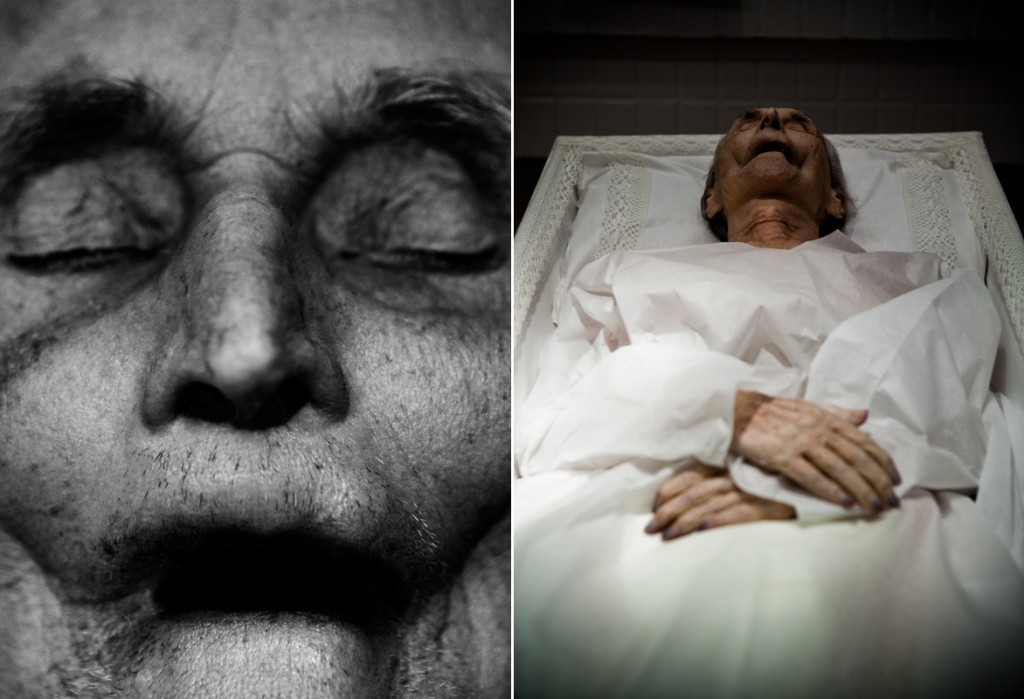
Most people in Finland don’t know that you can go dress the deceased. And if they did they probably wouldn’t do it. Death is still a taboo. You are not supposed to talk about it, little alone to show pictures about it. I don’t know why this is. Maybe we don’t want to be reminded of the fact that none of us is immortal.
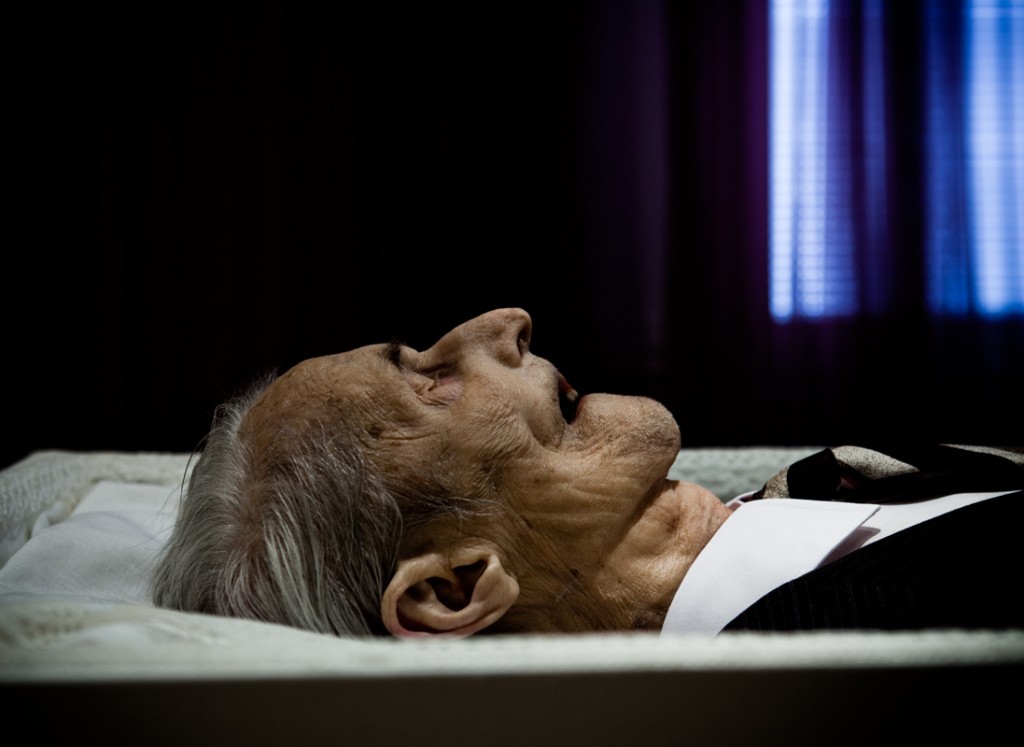
My grandfather and I were not close for many years due to the fact that he and my grandmother lived far away. Only after he ́s condition started to deteriorate did I make more effort to visit them. The visits were not easy. He didn’t have his hearing anymore and my grandmother had no short term memory. She would ask the same questions again and again and he would sit in the table and smile, not knowing what we were talking about. But he seemed pleased that he still recognised me.
The moment of preparing my grandfather was beautiful. Time seemed to come to a halt. There was no hurry, nothing outside the present moment. All the memories felt stronger, more concrete. During the years I had photographer him on many occasions, he always had this amazing feeling of presence. This was our last shoot together although in some sense he was no longer here. Merely a shell was left. I took photos for a few minutes, then I closed the coffin with the mortician. That was that. The last time I saw him.
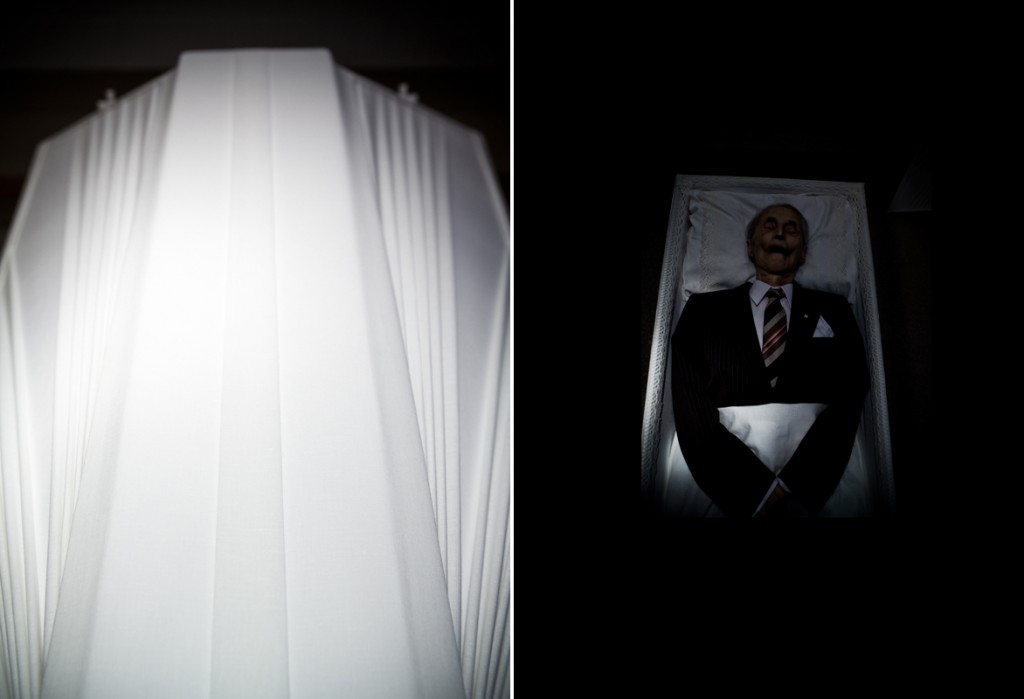
Later as I watch the pictures he seems to be at ease. And there still is that sense of presence. In some way I feel a lot closer to him now than I did before.
2014
back to work
You can see more of Kimmo’s work HERE.
